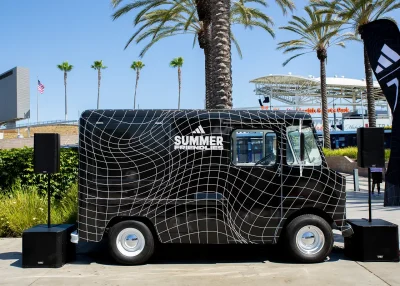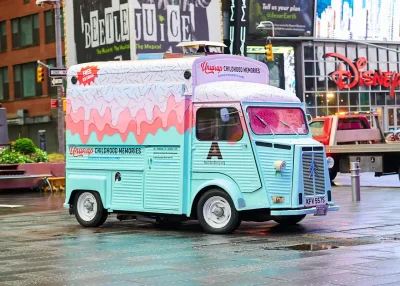
Marketing in Motion: The Rise of the Mobile Marketing Vehicle
While traditional advertising still has its place, modern brands are constantly seeking more creative and interactive ways to connect with their target audiences. Thanks to
These days, traditional marketing strategies just don’t cut it. With common advertising techniques yielding suboptimal results, it’s clear younger demographics aren’t as receptive to the strategies of yesteryear. Print, radio, and even television marketing have consistently declined in R.O.I, and social media advertising has grown to the point of over-saturation.
That’s why you need to adjust the methods you use to reach potential customers. The best way to do this is by developing an experiential marketing strategy. Experiential marketing is a cutting-edge guerrilla marketing tactic, designed to engage consumers and form a long-term emotional bond with your brand.
Experiential marketing, also known as engagement marketing, is a strategy that utilizes direct contact with a customer as a means to establish a strong connection between that customer and your brand. This contact acts as a way for the consumer to experience how their life could benefit from your product or service, and encourages organic growth of brand-awareness.
The way this growth comes about is by providing an experience so engaging, the customer wants to share it with other people (either in-person or via social media). In this way, you get far more bang for your buck than with traditional marketing. If you can have someone associate positive feelings with your brand, to the point where they feel compelled to tell others, that effect will multiply and result in further brand activations.
Experiential marketing allows customers to see the human element behind a product or business. This has shown to be quite effective in fostering an emotional connection with a brand, and these tend to outlast the more shallow connections formed through traditional advertising. A smiling face, sincere enthusiasm, and real physical interaction with a product can all make a huge difference in creating long term, loyal patronage.
The way you go about designing this brand experience depends entirely on what your product or service is, how you want to be seen by the public, and what your activation goals are. While the possibilities are endless, there are a few tried-and-true experiential marketing strategies you can use as the foundation for your campaign.
There is a wide range of different avenues to explore when developing your experiential marketing strategy. Here are several different types of strategies, and how they can function to boost brand activations.
The way you develop your experiential marketing strategy relies heavily on the image of your brand. You need to fully understand who your customer base is and what they want. Designing an experience that plays to these desires can help foster the emotional connection you are shooting for. You want a potential consumer to experience how their life could benefit from a relationship with your brand.
Let’s take one of the above methods, and apply it to a fictional coffee brand to see how it would function.
If your coffee brand is looking to create an experiential marketing strategy, a good choice would be to create a pop-up café.
As a lower-cost item, coffee is an easier sell than a piece of technology or clothing. While a high-end fashion company may benefit from a brand booth, most customers are willing to shell out a few dollars to try a new brand of coffee. Allowing a customer to smell and taste the product in a coffee shop type setting will create that positive experience you are aiming for.
Having a temporary storefront, with eye-catching visual branding drawing people in, is a great way to get your product into the hands of potential long-term customers. Then, when the pop-up shop is gone, this customer will naturally look for your brand in stores to recreate those feelings of positivity.
This is just one of a nearly infinite number of possibilities for combining your unique brand with a complimentary experiential marketing method. The ability to tailor the brand experience you provide to consumers is the largest benefit of developing an experiential marketing strategy. That, and many other reasons, are why it should be a primary technique in your marketing campaign playbook.
One of the major reasons experiential marketing is so effective is because these kinds of face-to-face campaigns are completely customizable. If you’ve never developed your own brand activation concept, don’t worry. Our team can help you brainstorm an experiential marketing campaign that is tailored wholly to you, considering your desired target audience, budget, market, and other preferences you may have.
Learn more about our experiential marketing agency and contact us today to get started.

While traditional advertising still has its place, modern brands are constantly seeking more creative and interactive ways to connect with their target audiences. Thanks to

In today’s crowded marketing landscape, brands are constantly seeking ways to stand out and forge real connections with their audiences. Enter the experiential marketing vehicle

In today’s competitive landscape, brands must do more than advertise — they must be willing to connect. But what’s the best way to start that